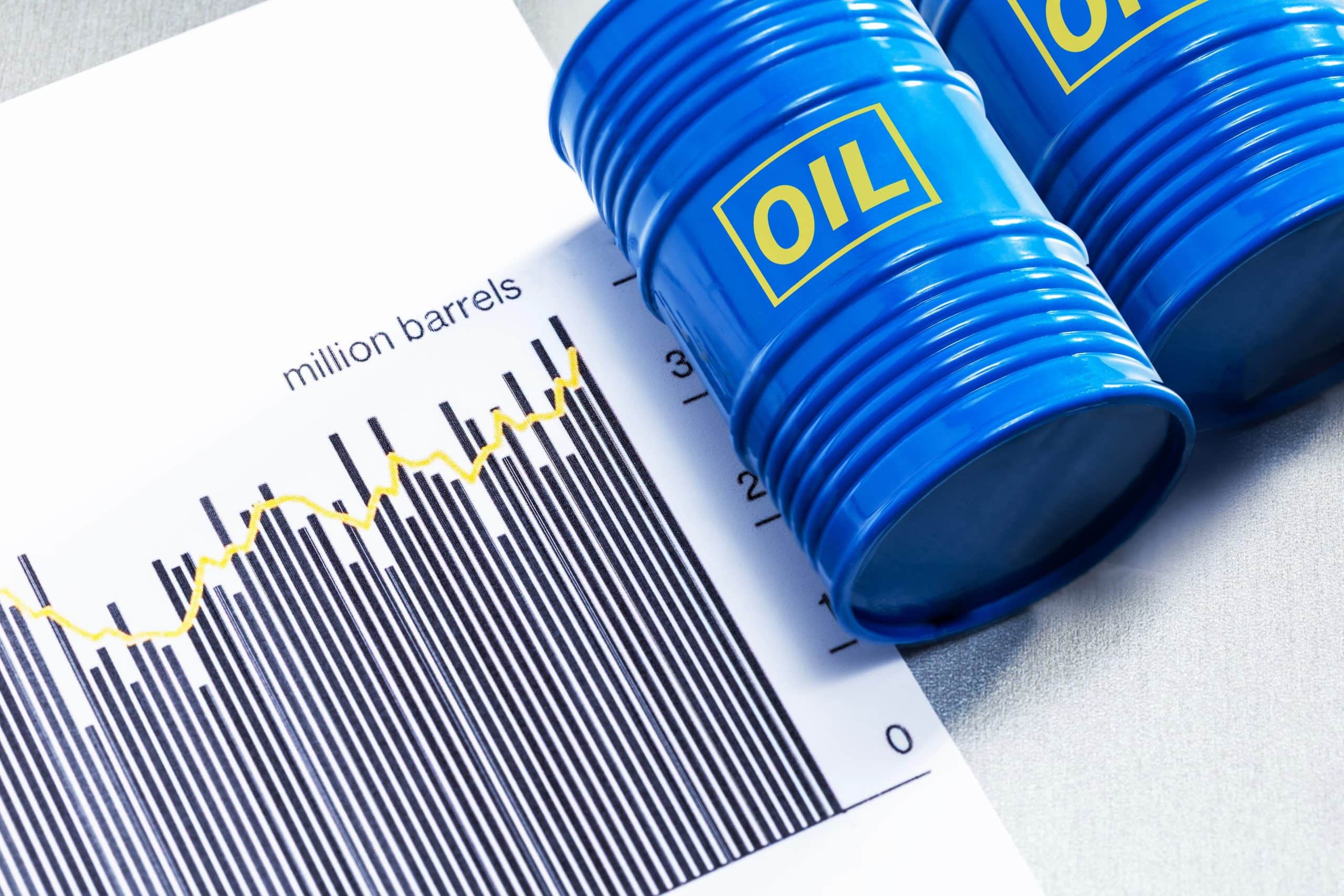Oil Prices Rise as Ukraine Peace Talks Stall: Supply Concerns Take Center Stage
Introduction
The global oil market remains one of the most sensitive sectors to geopolitical developments. Recently, stalled peace talks in Ukraine have once again fueled concerns about supply disruptions, pushing oil prices higher. While Ukraine itself is not a major oil producer, its role as a key transit hub for oil and gas supplies into Europe makes stability in the region crucial. The breakdown of negotiations has amplified fears of restricted flows, sanctions, and market volatility, directly influencing the cost of crude oil worldwide.
The Link Between Conflict and Oil Prices
When conflict arises in or near regions tied to energy production and transport, markets react almost instantly. In the case of Ukraine, instability creates uncertainty about energy security across Europe. As diplomatic progress slows, buyers and investors anticipate potential shortages, causing oil prices to surge. This dynamic demonstrates how political developments far from the oil fields can nonetheless reshape global markets.
Geopolitical Uncertainty
Stalled peace negotiations create unpredictability in supply forecasts. The longer the conflict persists without resolution, the greater the anxiety among buyers, which leads to higher prices.
Market Speculation
Financial markets often respond to news faster than physical supply chains can adjust. Traders may engage in speculative buying whenever negative updates emerge from Ukraine, further driving up oil prices.
Sanctions and Trade Barriers
Western sanctions on Russian oil and gas play a pivotal role in reshaping global supply dynamics. Reduced availability from Russia forces other suppliers to step in, tightening the market further.
Search for Alternatives
Nations that depend heavily on Russian oil are compelled to diversify their energy sources. This shift places additional pressure on alternative suppliers, raising demand and prices across the board.
Global Ripple Effects
The European Union, with its reliance on Russian energy, remains particularly vulnerable to disruptions. In times of heightened tension, the EU scrambles to secure alternatives, which intensifies competition in global markets. Oil-producing nations such as those in OPEC also monitor the situation closely, adjusting production to maintain balance. These decisions further shape the price trajectory of crude oil, highlighting how interconnected global markets truly are.
A peaceful resolution to the conflict could stabilize prices, while ongoing instability is likely to sustain volatility. For both consumers and businesses, this underscores the importance of staying informed and preparing for fluctuating energy costs.
Strategies for Consumers and Businesses
Rising oil prices inevitably filter down to individuals and organizations through higher transportation, heating, and operational expenses. Adopting practical strategies can help manage the impact.
Evaluate and Adjust Consumption Habits
Consumers can reduce fuel dependence by embracing simple yet effective changes:
-
Use public transportation where possible to cut costs.
-
Organize carpools or share rides to reduce individual expenses.
-
Practice fuel-efficient driving techniques, such as steady acceleration and speed control, to improve mileage.
Embrace Energy Alternatives
Exploring non-oil energy sources can reduce vulnerability to market volatility:
-
Consider investing in electric vehicles, which are becoming more affordable and practical.
-
Install renewable energy solutions like solar panels to cut reliance on oil-based energy.
-
Explore alternative-fuel appliances for heating and cooking.
Monitor Market Trends
Understanding oil market movements can give consumers and businesses a financial edge:
-
Follow global news related to peace negotiations, sanctions, and energy supply developments.
-
Track oil prices through reliable economic data and apps.
-
Be aware of seasonal fluctuations in demand and plan fuel purchases accordingly.
Reassess Financial Strategies
Rising oil prices can strain budgets, making it crucial to adapt:
-
Review household or business budgets regularly and trim unnecessary expenses.
-
Build an emergency fund to cushion sudden increases in living costs.
-
Explore investment opportunities in the energy sector, though with caution due to volatility.
Explore Local Supply Options
Supporting local supply chains can also reduce exposure to international energy shocks:
-
Buy locally produced goods to minimize transportation costs influenced by fuel prices.
-
Participate in community co-ops that pool resources and reduce oil-dependent consumption.
Conclusion
The stalling of Ukraine peace talks highlights the fragility of global energy markets. Rising oil prices, driven by renewed supply concerns, are a reminder of how deeply political developments can influence everyday life. For consumers, this means higher transportation and utility costs; for businesses, increased operational expenses.
By staying informed, adopting energy-efficient practices, and exploring alternatives, both individuals and organizations can better navigate this uncertain environment. While volatility may persist, proactive strategies—from budget adjustments to embracing renewable energy—offer pathways to resilience. In a world where geopolitical tension directly affects the pump and the power bill, adaptability is the key to turning challenges into opportunities.
Comparison, examination, and analysis between investment houses
Leave your details, and an expert from our team will get back to you as soon as possible
* This article, in whole or in part, does not contain any promise of investment returns, nor does it constitute professional advice to make investments in any particular field.
To read more about the full disclaimer, click here- Articles
- •
- 10 Min Read
- •
- ago 5 minutes
 What To Expect From Workday’s (WDAY) Q2 Earnings
What To Expect From Workday’s (WDAY) Q2 Earnings
Key Insights and Predictions for Workday’s Q2 Report As Workday (WDAY) prepares to release its Q2 earnings report, anticipation is
- ago 5 minutes
- •
- 10 Min Read
Key Insights and Predictions for Workday’s Q2 Report As Workday (WDAY) prepares to release its Q2 earnings report, anticipation is
- Articles
- •
- 9 Min Read
- •
- ago 9 minutes
 OSI Systems (OSIS) Reports Earnings Tomorrow: What To Expect
OSI Systems (OSIS) Reports Earnings Tomorrow: What To Expect
Earnings Report Expectations OSI Systems (OSIS) is preparing to release its much-anticipated earnings report tomorrow, an event closely followed by
- ago 9 minutes
- •
- 9 Min Read
Earnings Report Expectations OSI Systems (OSIS) is preparing to release its much-anticipated earnings report tomorrow, an event closely followed by
- orshu
- •
- 11 Min Read
- •
- ago 1 hour
 Walmart Earnings: What To Look For From WMT
Walmart Earnings: What To Look For From WMT
Walmart Earnings: What to Look For From WMT Analyzing Walmart Earnings: Key Indicators to Watch Walmart, the world’s largest retailer,
- ago 1 hour
- •
- 11 Min Read
Walmart Earnings: What to Look For From WMT Analyzing Walmart Earnings: Key Indicators to Watch Walmart, the world’s largest retailer,
- Lior mor
- •
- 18 Min Read
- •
- ago 1 hour
 Canva Begins Share Sale at $42 Billion Valuation, Bloomberg News Reports
Canva Begins Share Sale at $42 Billion Valuation, Bloomberg News Reports
The Implications of Canva's $42 Billion Valuation and Share Sale on the Design Industry Canva's recent valuation of $42 billion
- ago 1 hour
- •
- 18 Min Read
The Implications of Canva's $42 Billion Valuation and Share Sale on the Design Industry Canva's recent valuation of $42 billion












